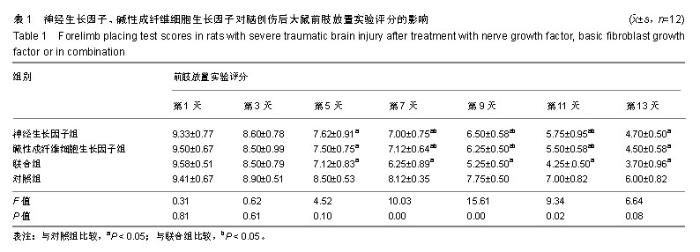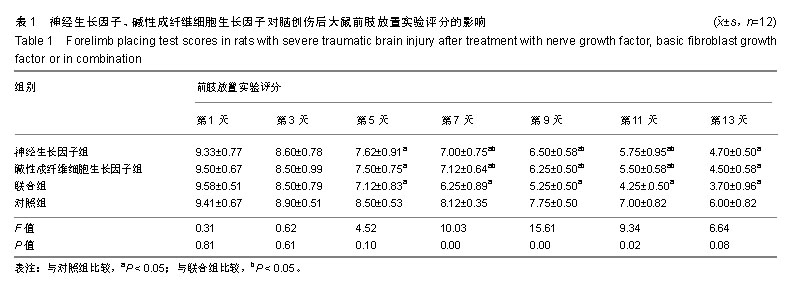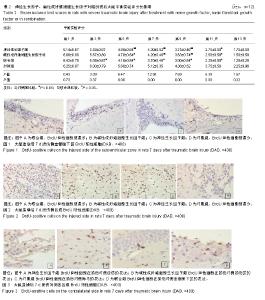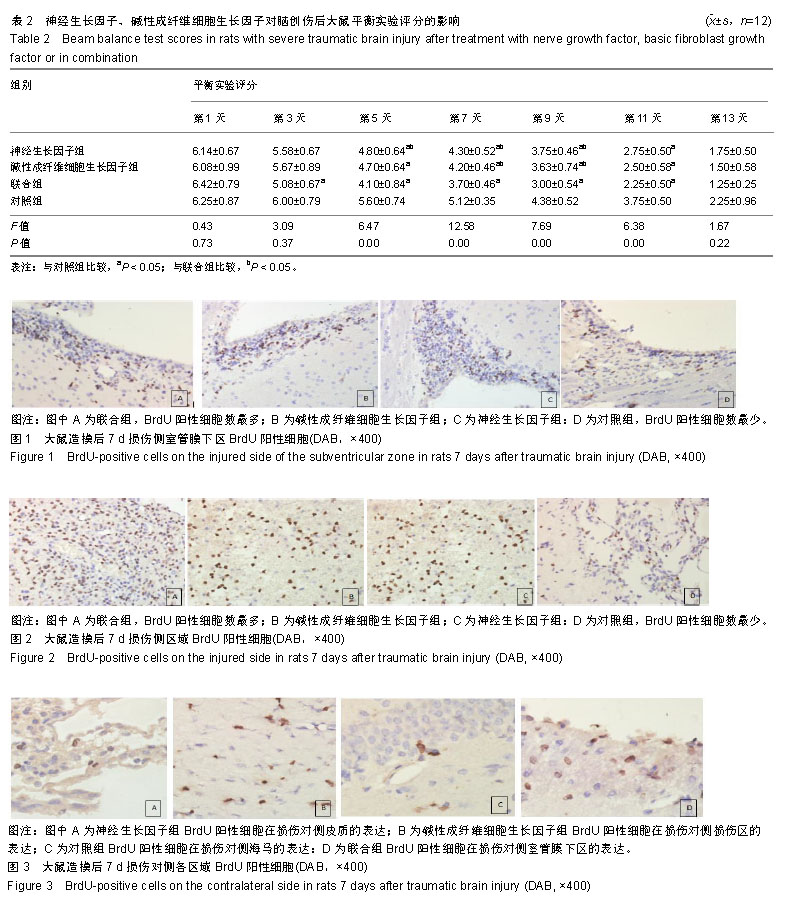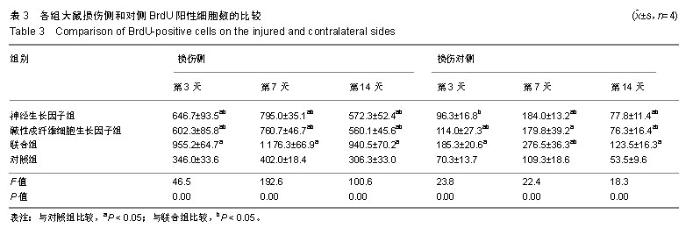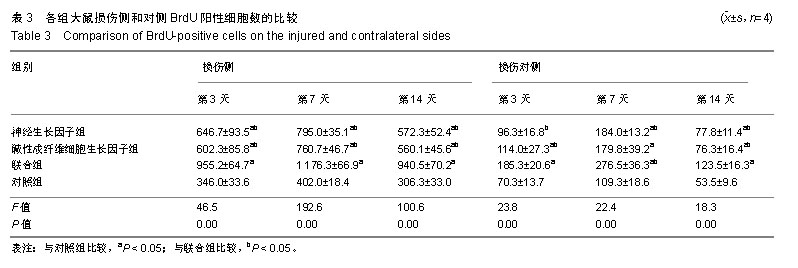| [1]Chauhan NB. Chronic neurodegenerative consequences of traumatic brain injury. Restor Neurol Neurosci. 2014;32(2): 337-365.[2]Wurzelmann M, Romeika J, Sun D. Therapeutic potential of brain-derived neurotrophic factor (BDNF) and a small molecular mimics of BDNF for traumatic brain injury. Neural Regen Res. 2017;12(1):7-12.[3]Gage FH. Mammalian neural stem cells. Science. 2000; 287(5457):1433-1438.[4]Kernie SG, Parent JM. Forebrain neurogenesis after focal Ischemic and traumatic brain injury. Neurobiol Dis. 2010;37(2): 267-274.[5]Li C, Che LH, Shi L, et al. Suppression of Basic Fibroblast Growth Factor Expression by Antisense Oligonucleotides Inhibits Neural Stem Cell Proliferation and Differentiation in Rat models With Focal Cerebral Infarction. J Cell Biochem. 2017;118(11):3875-3882.[6]Cui K, Zhou X, Luo J, et al. Dual gene transfer of bFGF and PDGF in a single plasmid for the treatment of myocardial infarction. Exp Ther Med. 2014;7(3):691-696.[7]Chen SQ, Cai Q, Shen YY, et al. Combined use of NGF/BDNF/bFGF promotes proliferation and differentiation of neural stem cells in vitro. Int J Dev Neurosci. 2014;38:74-78.[8]Feeney DM, Boyeson MG, Linn RT, Responses to cortical injury: I. Methodology and local effects of contusions in the rat. Brain Res. 1981;211(1):67-77.[9]刘阳,刘卫平,王孝安,等. 神经生长因子与表皮生长因子干预创伤性脑损伤后内源性神经干细胞的增殖[J]. 中国组织工程研究, 2012,16(1): 65-69.[10]Reynolds BA, Weiss S. Generation of neurons and astrocytes from isolated cells of the adult mammalian central nervous system. Science. 1992;255(5052):1707-1710.[11]Yu TS, Washington PM, Kernie SG. Injury-Induced Neurogenesis: Mechanisms and Relevance. Neuroscientist. 2016;22(1):61-71.[12]Aleksandrova MA, Podgornyi OV, Marei MV, et al. Characteristics of human neural stem cells in vitro and after transplantation into rat brain. Bull Exp Biol Med. 2005;139(1): 114-120.[13]Wang X, Gao X, Michalski S, et al. Traumatic Brain Injury Severity Affects Neurogenesis in Adult Mouse Hippocampus. J Neurotrauma. 2016;33(8):721-733.[14]Choi KC, Yoo DS, Cho KS, et al. Effect of single growth factor and growth factor combinations on differentiation of neural stem cells. J Korean Neurosurg Soc. 2008;44(6):375-381.[15]Lin Y, Wan JQ, Gao GY, et al. Direct hippocampal injection of pseudo lentivirus-delivered nerve growth factor gene rescues the damaged cognitive function after traumatic brain injury in the rat. Biomaterials. 2015;69:148-157.[16]Xiong LL, Chen ZW, Wang TH.Nerve growth factor promotes in vitro proliferation of neural stem cells from tree shrews.Neural Regen Res. 2016;11(4):591-596.[17]Chittka A. Differential regulation of SC1/PRDM4 and PRMT5 mediated protein arginine methylation by the nerve growth factor and the epidermal growth factor in PC12 cells. Neurosci Lett. 2013;550:87-92.[18]Liu F, Xuan A, Chen Y, et al. Combined effect of nerve growth factor and brain?derived neurotrophic factor on neuronal differentiation of neural stem cells and the potential molecular mechanisms. Mol Med Rep. 2014;10(4):1739-1745.[19]Cirulli F, Alleva E. The NGF saga: from animal models of psychosocial stress to stress-related psychopathology. Front Neuroendocrinol. 2009;30(3):379-395.[20]Song JN, Liu ZW, Sui L, et al.Dynamic expression of nerve growth factor and its receptor TrkA after subarachnoid hemorrhage in rat brain.Neural Regen Res. 2016;11(8): 1278-1284.[21]Mahmood A, Lu D, Wang L, et al. Intracerebral transplantation of marrow stromal cells cultured with neurotrophic factors promotes functional recovery in adult rats subjected to traumatic brain injury. J Neurotrauma. 2002;19(12): 1609-1617.[22]Chiaretti A, Antonelli A, Genovese O, et al. Nerve growth factor and doublecortin expression correlates with improved outcome in children with severe traumatic brain injury. J Trauma. 2008;65(1):80-85.[23]Yeoh JS, de Haan G. Fibroblast growth factors as regulators of stem cell self-renewal and aging. Mech Ageing Dev. 2007; 128(1):17-24.[24]Ramirez JJ, Finklestein SP, Keller J, et al. Basic fibroblast growth factor enhances axonal sprouting after cortical injury in rats. Neuroreport. 1999;10(6):1201-1204.[25]Caday CG, Klagsbrun M, Fanning PJ, et al. Fibroblast growth factor (FGF) levels in the developing rat brain. Brain Res Dev Brain Res. 1990;52(1-2):241-246.[26]Sun D, Bullock MR, McGinn MJ, et al. Basic fibroblast growth factor-enhanced neurogenesis contributes to cognitive recovery in rats following traumatic brain injury. Exp Neurol. 2009;216(1):56-65.[27]Zhang R, Zhang Z, Wang L, et al. Activated neural stem cells contribute to stroke-induced neurogenesis and neuroblast migration toward the infarct boundary in adult rats. J Cereb Blood Flow Metab. 2004;24(4):441-448.[28]Wang ZG, Cheng Y, Yu XC, et al. bFGF Protects Against Blood-Brain Barrier Damage Through Junction Protein Regulation via PI3K-Akt-Rac1 Pathway Following Traumatic Brain Injury. Mol Neurobiol. 2016;53(10):7298-7311. |
